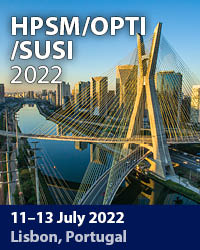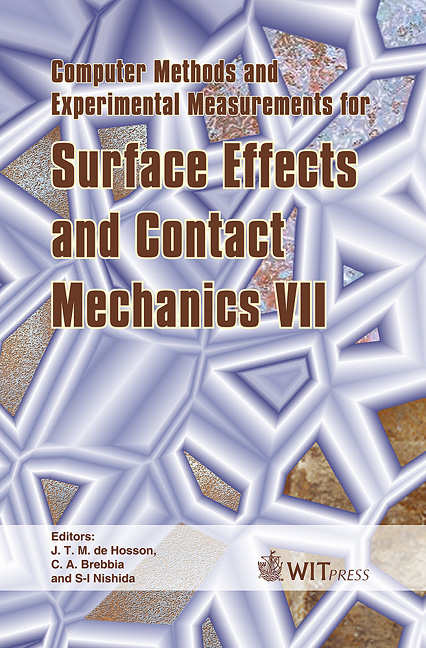Torsional Contact Between A Flat Annular Indenter And A Transversely Isotropic Composite
Price
Free (open access)
Transaction
Volume
49
Pages
9
Published
2005
Size
327 kb
Paper DOI
10.2495/SECM050301
Copyright
WIT Press
Author(s)
Y. M. Tsai
Abstract
The torsional contact between an annular indenter and a transversely isotropic material is investigated using the techniques of multiple integral representations and multiplying factors. The boundary conditions involved have three mixed parts. The contact shear stress is obtained in exact expressions as the sum of singular and nonsingular parts. The distributions of the contact stress are calculated for various values of the ratios of the inner indenter radius a to the outer indenter radius b. For the same amount of torsional rotation, the level of the contact stress for a relatively large value of a/b is found to be significantly higher than that for a small value of a/b. The contact torque is determined from the contact stress as a function of the ratio between the inner and outer radius of the indenter. The value of the normalized torque is found to decrease with increasing value of a/b. The circumferential displacements inside and outside the contact area are determined as a function of the normalized radial distance and shown to be continuous at the inner and outer edges of the indenter. The circumferential displacement for an indenter with a relatively large value of a/b is found to be less than that for an indenter with a smaller value of a/b both inside and outside the contact region. Keywords: torsional contact stress, transversely isotropic composite, annular indenter, torsional torque and displacement. 1 Introduction Composite materials have been used extensively in structural applications and generated considerable interest in the behavior of anisotropic materials. Many fiber-reinforced composite materials and platelet systems are described as transversely isotropic materials with five elastic constants [1]. A layered system
Keywords
torsional contact stress, transversely isotropic composite, annular indenter, torsional torque and displacement.





